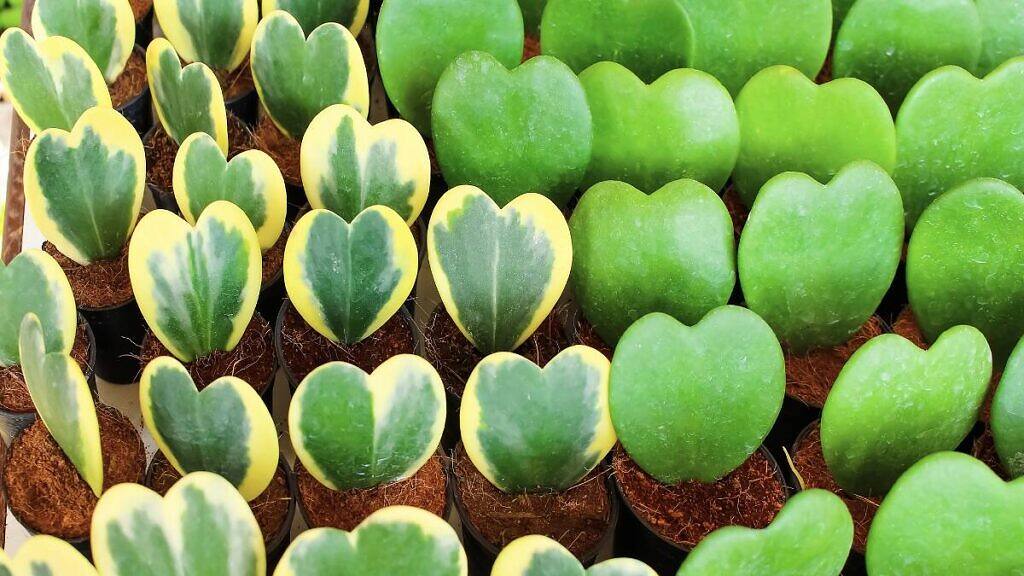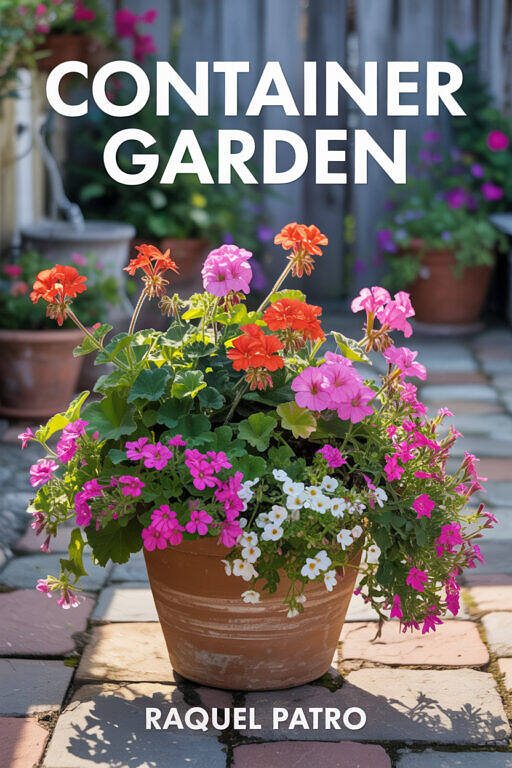The Sweetheart Hoya (Hoya kerrii) has captivated gardeners around the world not only for the unique beauty of its perfectly heart-shaped leaves but also for the romantic symbolism it carries. This succulent vine from the Apocynaceae family has become a classic Valentine’s Day gift where small seedlings with a single heart-shaped leaf are marketed as symbols of affection and good luck. In interior decoration, it is used in pots and supports as a collection plant and small vine, standing out for its umbellate inflorescences and succulent foliage. Curiously, the flowers, which appear to be made of wax, produce abundant nectar with a red to brown hue.
The genus name Hoya honors the English horticulturist Thomas Hoy. The specific epithet kerrii honors the physician and botanist Arthur Francis George Kerr, who collected the type material in northern Thailand in the early 20th century. The species was once treated as a variety of Hoya obovata, but today it is recognized as a distinct species and is very close phylogenetically to this congener.
Native to Southeast Asia, the Sweetheart Hoya occurs in southern China, Vietnam, Laos, Cambodia, Thailand, and on the island of Java, Indonesia. It naturally grows as a vine in the dense vegetation of tropical forests, relying on shrub and tree cover. The habitat where it was first collected is located in the Doi Suthep mountains, west of Chiang Mai (northern Thailand), at an altitude of about 1,280 feet (390 meters). In nature, the Sweetheart Hoya displays inflorescences about 2 inches (5 cm) in diameter, with up to 25 flowers that remain open for approximately two weeks.

The Sweetheart Hoya is a succulent, monoecious, perennial, and predominantly herbaceous vine. In cultivation or in a natural environment, it can reach about 13 feet (4 meters) in length. As a dicotyledon, it has a primary taproot system and can emit adventitious roots at the nodes when in contact with a support or substrate. The stems are pale, glabrous, cylindrical, up to 0.28 inches (7 mm) in diameter, with a smooth surface and flexible consistency. Branching occurs from the nodes, following the available support.
The leaves are opposite, simple, thick, and succulent, with petioles approximately 0.2 to 0.8 inches (0.5 to 2 cm) long. The leaves measure about 1.6 to 4.7 inches (4 to 12 cm) in length and 2 to 3.7 inches (5 to 9.5 cm) in width, featuring an interesting inverted heart shape (obcordate), with a deeply bilobed apex and a central notch of 0.4 to 0.7 inches (1 to 1.75 cm); the base is rounded to broadly cuneate and the margins are entire. The surface is glabrous and smooth, with a prominent main vein and subtle secondary veins; the color is green. The leaves are persistent, remaining on the plant throughout the year.
As if the unique leaves were not enough, the Sweetheart Hoya also displays interesting flowering. Its succulent flowers appear to be made of wax, are hermaphroditic, with radial symmetry and floral parts numbering five. Flowering is concentrated in the warmer seasons, varying according to the local climate, and each flowering phase can last about two weeks. The inflorescences are dense, multifloral (up to about 25 flowers), measuring 1.6 to 2 inches (4 to 5 cm) in diameter, supported by peduncles 0.8 to 2.4 inches (2 to 6 cm) long.

Each flower features an interesting overlap of two star-shaped structures: the whitish, velvety corolla, with recurved lobes at the base and the shiny central corona, pink to purple at the apex. They exude abundant nectar of a reddish to brownish color. Pollination is entomophilous. The fruits, when formed, are paired follicles, dry, dehiscent, usually brownish as they mature. The seeds are numerous, small, flattened, equipped with a silky tuft (coma) that facilitates dispersal by wind.
Currently, there are different types of Sweetheart Hoya cultivated and recognized in the ornamental market, mainly differing in terms of variegation and color patterns.
Among these, we can mention:
- Hoya kerrii (type species): entirely green leaves, distinctive heart-shaped form, relatively vigorous growth, and flowering with a pink to purple crown; suitable for those who prioritize hardiness and uniform foliage.
- Hoya kerrii ‘Variegata’ (also marketed as ‘Albomarginata’): cream to white margins contrasting with the green center, slower sprouting, and a need for more light to maintain the pattern; widely spread in collections.
- Hoya kerrii ‘Reverse Variegata’ (also sold as ‘Inner Variegata’): light central variegation with green edges, leaves that may acquire a pinkish hue in intense light, and higher sensitivity to sunburn.
- Hoya kerrii ‘Splash’: green leaves with irregular silver speckles, dotted visual effect, and a highlight in foliage compositions; stable variation in cultivation.
- Hoya kerrii ‘Super Splash’: an even denser pattern of silver speckles, collectible appeal, and pronounced contrast in dark pots or hanging baskets.
Indoors, the Sweetheart Hoya acts as a focal point in table pots, cachepots, or hanging baskets, enhancing the heart-shaped form of the leaves. When trained on small arches, trellises, or U-shaped supports, it creates delicate vertical lines, useful for composing green walls and shelves with a compact climbing effect. The variegated forms work particularly well as color highlights, interacting with uniform green foliage around them. For textural compositions, it pairs with ferns with fine or lacy fronds, such as maidenhair ferns, Rhipsalis, and Peperomia, creating a contrast between the succulence of the leaves and more filigree structures. In circulation areas, it is advisable to position pots above hand level to avoid contact with the nectar from the inflorescences. The presence of latex and sticky nectar requires care in the arrangement of pots in indoor environments, to avoid stains on furniture.

In protected outdoor areas free of frost, it integrates into garden settings on balconies and patios as a small-scale climber on light trellises, low fences, and decorative supports.
In beds under partial shade, it can form vibrant panels alongside other Hoyas or moderately growing ornamental climbers, providing points of interest during the blooming period. The abundant nectar tends to attract nectar-feeding insects, which adds ecological value in biodiverse yards, as long as the plant is protected from strong direct sunlight. For visual effects, the variegated foliage creates bright spots in understory compositions with Aspidistra, medium-sized Philodendron, and upright ferns, while the typical species offers a uniform green mass for filling spaces.
Prefers abundant and indirect light (bright partial shade), tolerating a few hours of gentle sun in the early morning or late afternoon. Strong direct sunlight scorches the succulent leaves. Indoors, position near east-facing, well-lit north, or west windows with filtering, such as through a translucent curtain. The ideal climate is tropical to subtropical; in temperate regions, it is grown in pots, protected from the cold. Optimal temperatures range between 64 and 86°F (18 and 30°C), with growth slowing below 59°F (15°C).
The Sweetheart Hoya does not tolerate frost and suffers damage below 50–54°F (10–12°C). It prefers moderate relative humidity (40–70%) and good ventilation, and should be sheltered from strong winds and sea spray, which dehydrate and can cause marginal necrosis. The variegated form grows slower due to having less photosynthetic tissue.

In pots, use a highly draining and airy potting mix, suitable for epiphytes/succulents: medium fractions of pine bark, coconut fiber, perlite or pumice stone, and charcoal, with a small portion of peat or compost just for minimal retention. The pH should be slightly acidic to neutral (approx. 5.8–6.8), with low to moderate fertility, always with excellent drainage and a container with holes.
In the garden, only in frost-free climates, plant Sweetheart Hoya in raised beds with light soils amended with coarse material to prevent waterlogging. Water deeply and infrequently, allowing the potting mix to dry out from one-third to half its volume between waterings. Reduce frequency in winter and after cloudy days; rainwater, filtered or low salinity water prevents salt buildup. It tolerates short periods of drought but is sensitive to waterlogging and root rot; wrinkled leaves indicate thirst, while persistent yellowing suggests excess water.
Plant seedlings at the same level as the root ball, without overly compacting, and in a pot just one size larger, as the species blooms better when slightly constricted. Provide support for climbing (stakes, arches, trellis) or train as a hanging plant, securing the branches without strangling them. Fertilize in spring and summer with a balanced soluble fertilizer (e.g., NPK 10-10-10 or 20-20-20) at 1/4–1/2 the biweekly or monthly dose, alternating with formulas for epiphytes and supplementing with Ca/Mg when necessary.
Avoid excess nitrogen, which favors leaves at the expense of flowers; in fall-winter, reduce or pause fertilization. Perform cleaning and training pruning, preserving the floral peduncles (the same sites emit inflorescences repeatedly). Apply a light mulch (fine bark or dry moss) over the substrate to reduce evaporation, maintain good ventilation, rotate the pot periodically for even growth, and never allow water to accumulate in the saucer.

Sweetheart Hoya is moderately susceptible to mealybugs and armored scales, spider mites, and thrips, especially in dry and poorly ventilated environments. Pest honeydew promotes sooty mold; leaf spots and root rots occur under waterlogged conditions and low aeration. Conduct weekly inspections, quarantine new plants, and remove infestations with a cotton swab and 70% isopropyl alcohol or potassium soap, supplementing with neem oil or registered insecticides when necessary. Environmental adjustments—more diffuse light, ventilation, and correct watering—are crucial for prevention and recovery. Herbivory by animals is uncommon due to the typical latex of the Apocynaceae family, but keep it out of reach of pets and children due to possible oral and gastrointestinal irritation.
Propagation is most reliably achieved through stem cuttings with at least one active node (ideally 2–3 nodes) and one or two leaves; air layering also works well on vigorous branches. Commercially, the sale of rooted leaves in small pots has become popular; however, cuttings consisting only of a single leaf without a stem node rarely result in complete plants. Therefore, if you wish to grow the vine, avoid purchasing ‘single leaf cuttings’ without a node: the leaf may root, but it will not produce shoots or flowers. The single leaf plant serves as an ornament or gift, but it is not the best way to propagate the species.
To propagate the Sweetheart Hoya, cut below the node, remove the lower leaves, and allow it to heal for 12–24 hours. After the healing period, optionally apply rooting hormone (IBA) and plant in a very light and sterile potting mix, maintaining temperatures of 72–82 °F (22–28 °C), high indirect light, humidity of 60–80%, and ventilation. Water lightly until rooting occurs (4–8 weeks), then gradually increase the volume; water rooting is possible, but transplant when the roots are 1.2–2 inches (3–5 cm) long. The best time for propagation is spring and summer. From a well-established cutting, the first blooming typically occurs between 2 and 4 years, but it may take longer in variegated cultivars or under insufficient light.


